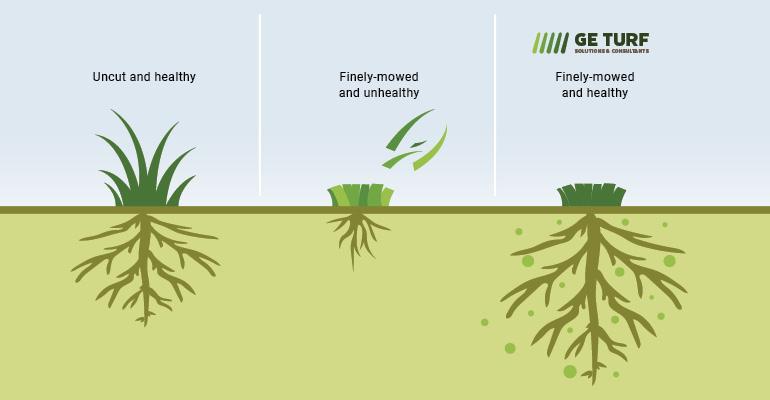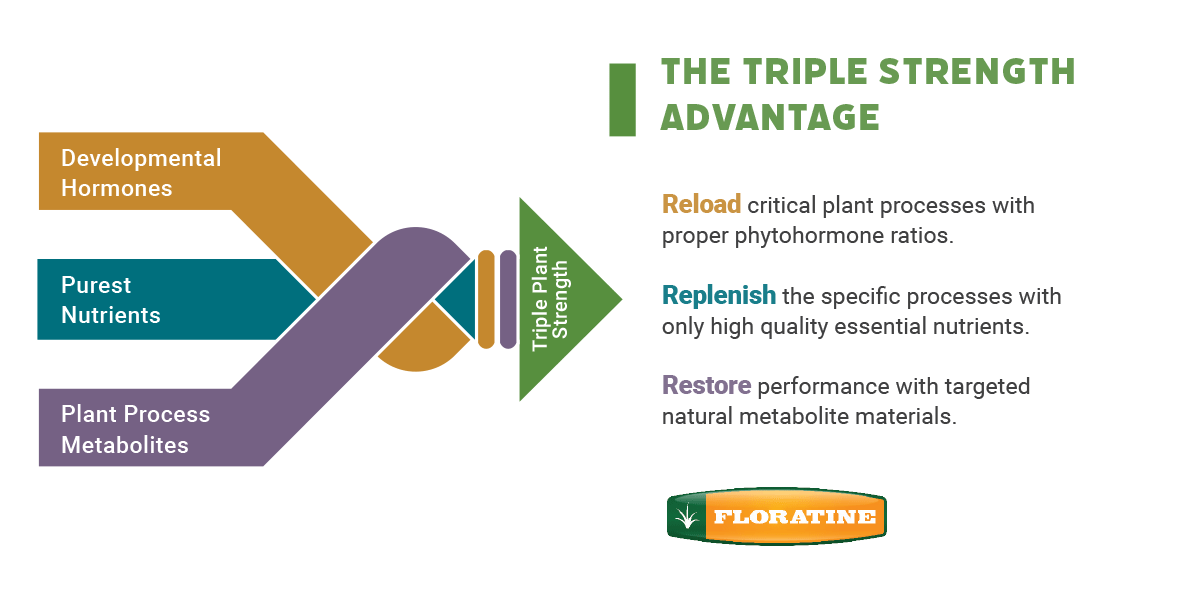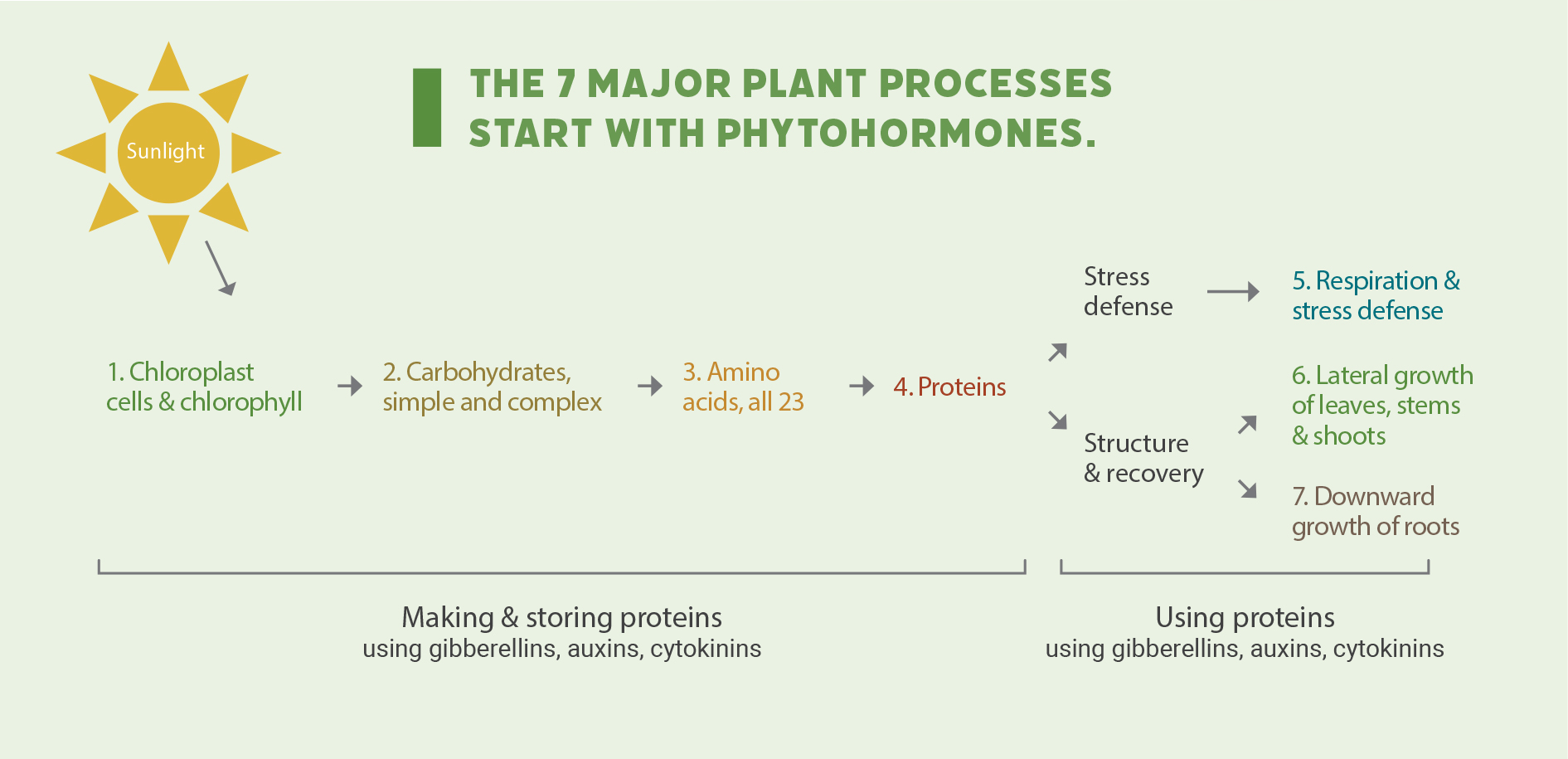Over the last several months we have focused on the 7 major plant processes. Below, we review all 7 steps and the triple strength advantage of utilizing Floratine® products.
Maximizing the 7 Natural Plant Processes to Naturally Restore True Plant Health
Plant health is directly related to photosynthesis, which drives critical plant processes. Unfortunately, mowing grass low removes most of its “solar panels” (leaf blades), preventing it from capturing enough sunlight.
Most of the critical elements in plant health are produced in the tip of the leaf blade. These elements include chlorophyll, carbohydrates, amino acids and proteins.
As photosynthesis is reduced, the plant cannot make or use enough proteins for structure, recovery, respiration and stress defense, leaving finely-mowed turf at a major disadvantage.
Floratine® was developed by turf scientists specifically for finely-mowed turf to naturally put back into the plant what is taken away when mowed and to boost the plant’s natural processes for increasing root mass and surface density, without the added plant height.



Step 1- Build Chloroplast Cells to Create More Chlorophyll
More Chlorophyll = Darker Green Color = More Captured Sunlight
This step is all about photosynthesis capturing sunlight with chloroplast cells. The amount of chlorophyll molecules that the plant can produce is determined by the linear feed of certain nutrients. In addition to nutrients, the plant will produce critical phytohormones in its leaves that determine how many chlorophyll molecules will be made. The darker the color, the more photosynthetic processes can make life-sustaining carbohydrates.
Step 2 – Build and Store More Carbohydrates
More photosynthesis = More carbohydrates
Carbohydrates are needed to fuel all plant processes for survival, recovery and defense. However, because low-mowed turf has less leaf area, the plant is extremely limited on its photosynthetic capabilities, which controls carbohydrate production and storage.
Step 3 – Amino Acids for True Plant Health™
CARBOHYDRATES + N (S) + PROTEIN ATP = AMINO ACIDS
Amino acids are the building blocks of proteins, which are needed for plant structure and defense. It takes a considerable amount of energy within the plant to produce the 23 different types of amino acids.
Step 4: Proteins for True Plant Health™
AMINO ACIDS + RIBOSOME = COMPLETE PROTEINS
Proteins are critical components in the survival of mowed-low turfgrasses because they are needed for defense and structure. When turfgrasses are under attack from pathogens, they produce pathogensis-related (PR) proteins which is part of their systemic acquired resistance, much like the immune system in animals. Since turfgrass produces a new leaf every 7-10 days, proteins within the plant need to be constantly produced in order to be used in subsequent generations of the plant (above and below ground).
Step 5: Solving Respiration and Stress
Defense Issues on Frequently Mowed Turf
As we learned from step 4, proteins are critical components in the survival of mowed-low turfgrasses because they are used by the plant as a natural defense from stress and attacks. But how can a plant better utilize them? It all starts with slowing down the plant’s respiration cycle by using phytohormones and boosting its protein production processes.
Step 6 & 7: Structure & Recovery
The more carbohydrates, amino acids and proteins the plant has, the more it can grow. However, with finely-mowed turf, we often don’t want growth upward. We usually want downward growth so the plant will bring in more nutrients and water, or lateral growth, for a denser canopy, or filling in from a core aerification.



